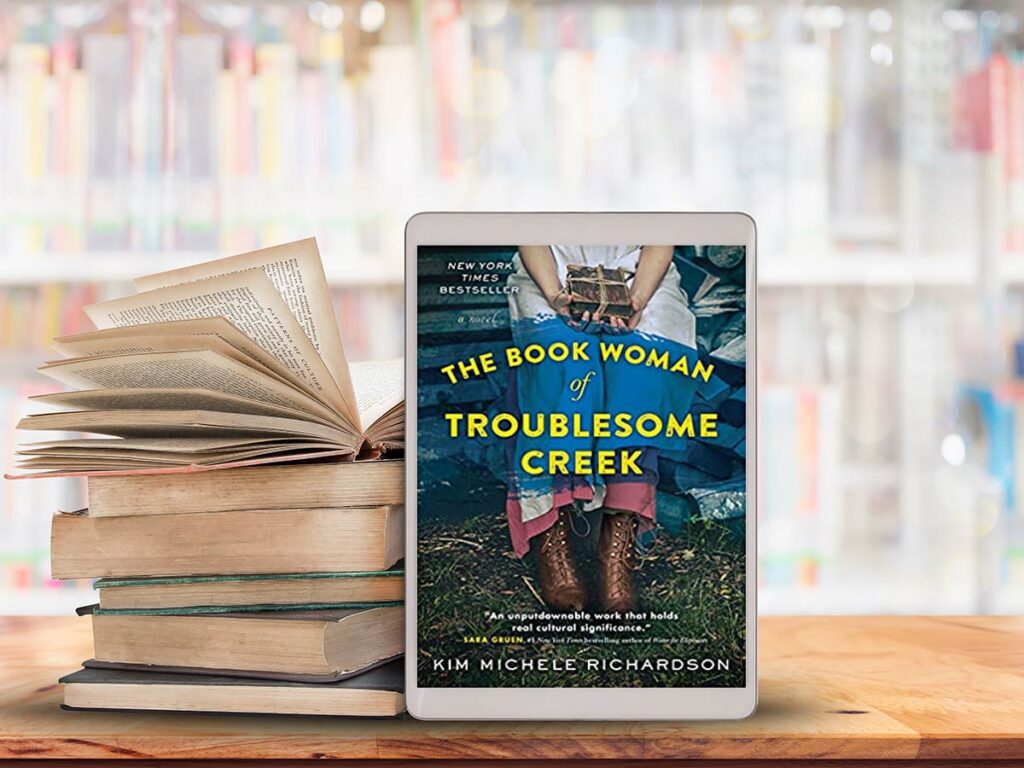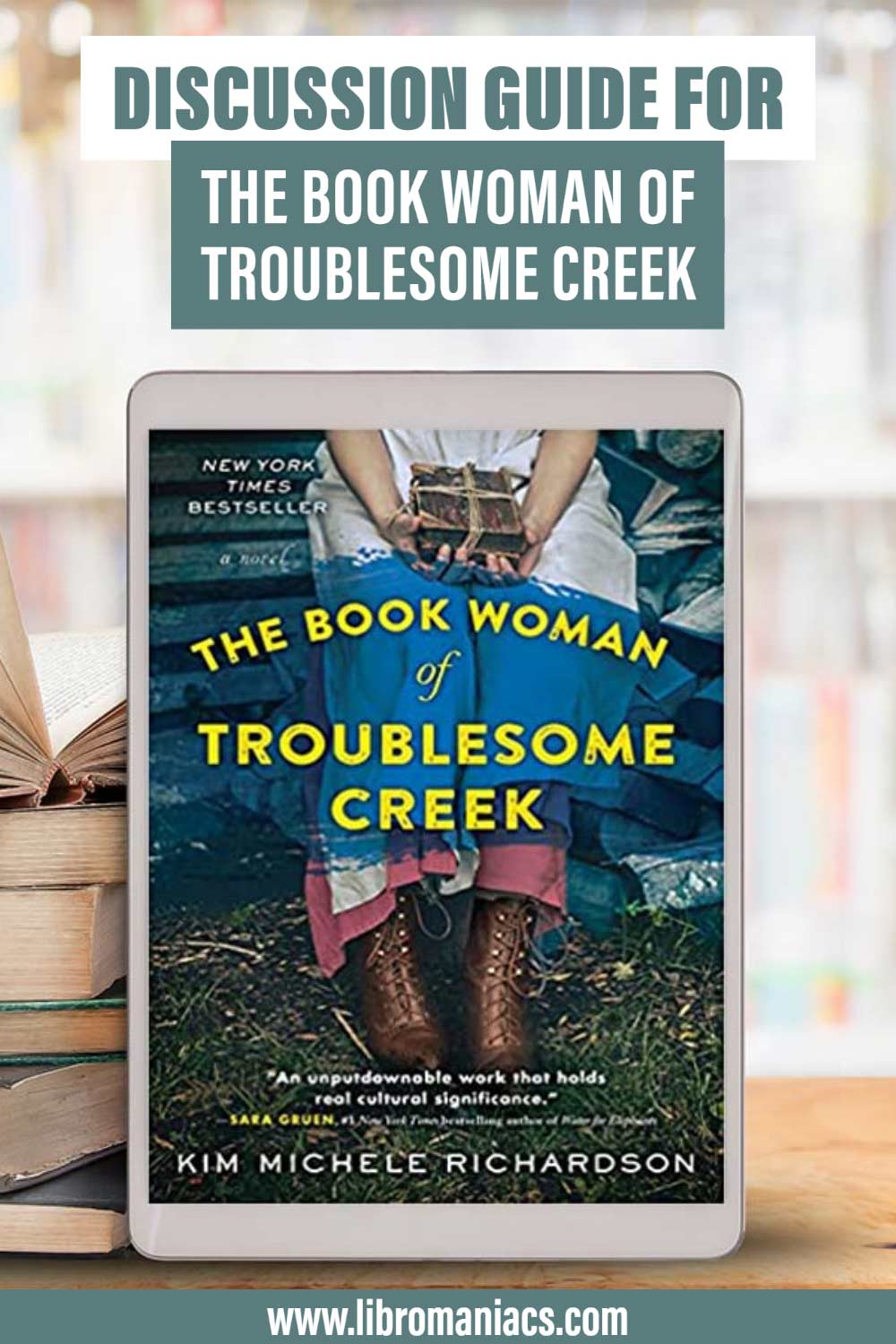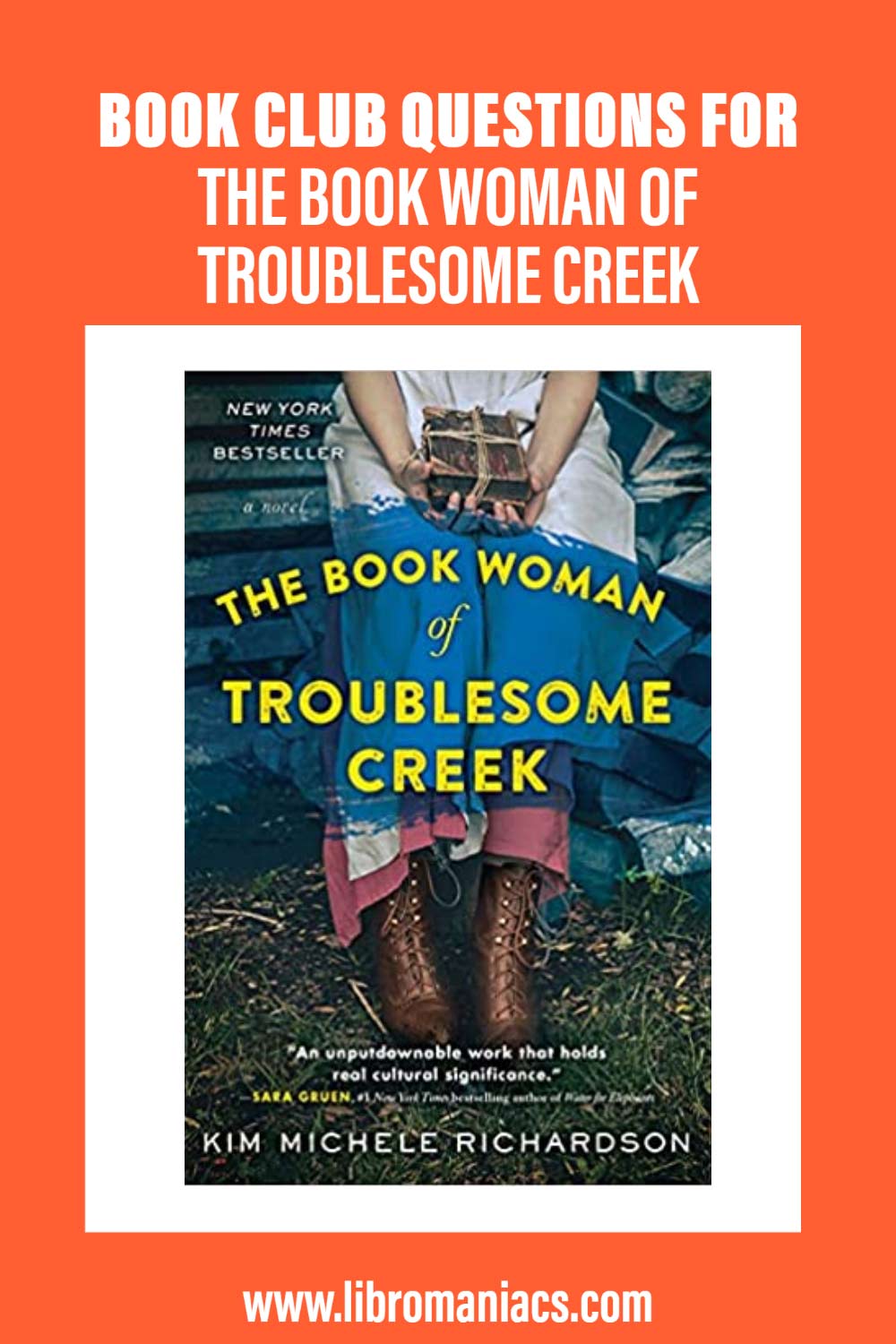The Book Woman of Troublesome Creek combines fascinating historical events, compelling characters, and social dynamics. Set in rural Kentucky in 1936, the book follows Cussy Carter as she works as a book woman, traveling through the mountains and bringing reading materials to the impoverished people of Eastern Kentucky. She faces discrimination and exclusion as one of Kentucky’s Blue people, who have a blue tint to their skin due to a genetic condition.
There’s so much to discuss here and you can use our book club questions for The Book Woman of Troublesome Creek to dive into the complex situations in Cussy’s life. This discussion guide for The Book Woman of Troublesome Creek will help your group explore the variety of social themes in this book, like poverty, discrimination, and exploitation. There’s also plenty to discuss with the story’s romance, adventure, and family relationships.
Check out the selected reviews, do you agree with them? What about the synopsis, was it accurate?
Keep scrolling after the discussion guide because we’ve also included 3 readalike books for The Book Woman of Troublesome Creek to add to your reading pile.

(This article contains affiliate links. This means that if you choose to purchase, I’ll make a small commission.)
The Book Woman of Troublesome Creek Synopsis
The Book Woman of Troublesome Creek, Kim Michele Richardson
The bestselling historical fiction novel from Kim Michele Richardson, this is a novel following Cussy Mary, a packhorse librarian and her quest to bring books to the Appalachian community she loves, perfect for readers of William Kent Kreuger and Lisa Wingate. The perfect addition to your next book club!
The hardscrabble folks of Troublesome Creek have to scrap for everything—everything except books, that is. Thanks to Roosevelt’s Kentucky Pack Horse Library Project, Troublesome’s got its very own traveling librarian, Cussy Mary Carter.
Cussy’s not only a book woman, however, she’s also the last of her kind, her skin a shade of blue unlike most anyone else. Not everyone is keen on Cussy’s family or the Library Project, and a Blue is often blamed for any whiff of trouble. If Cussy wants to bring the joy of books to the hill folks, she’s going to have to confront prejudice as old as the Appalachias and suspicion as deep as the holler.
Inspired by the true blue-skinned people of Kentucky and the brave and dedicated Kentucky Pack Horse library service of the 1930s, The Book Woman of Troublesome Creek is a story of raw courage, fierce strength, and one woman’s belief that books can carry us anywhere—even back home.
10 Book Club Questions for The Book Woman of Troublesome Creek
- “I liked my sensibility just fine. I liked my freedom a lot – loved the solitude these last seven months had given me – and I lived for the joy of bringing books and reading materials to the hill folk who were desperate for my visits, the printed word that brought a hopeful world into their dreary lives and dark hollows. It was necessary. And for the first time in my life, I felt necessary.”
Being a book woman is clearly much more than just a job for Cussy. How does this job help her deal with the difficult circumstances of her own life?
- What do you think of Doc? Was he trying to help the blue people, exploit them, or somewhere in between?
- There are many heartbreaking events in this book, which one was the most difficult for you?
- This book includes many cultural traditions, such as the courting candle, the pie bake, the natural remedies, and others. Did you learn anything new about Kentucky culture of this period?
- “Their hunger for books could teach them of a better life free of the hunger, but without food they’d never live long enough or have the strength to find it.” Cussy’s visits allowed the reader to see many different kinds of poverty in this region. How did it make you feel?
- “‘There’s nothing wrong with your color, being you,” he said firmly. “Nothing wrong with what the good Lord gives us in His world, Cussy Mary.’ He didn’t know, couldn’t know, the load I’d carried as a Blue, the scorn and hatred and gruesome marriage. How dare Pa call me vain and now Jackson. How dare he too? “Nothing wrong—” Jackson repeated. I stepped back and shot out a shaky hand. “No, Jackson Lovett, you’re wrong. There is nothing wrong with your color in your world, a world that wants only whiteness.”
Cussy marveled at her opportunity to get rid of her blue skin, even with the high price she paid. The reactions of people around her were not what she thought they would be. Why is that? Would you have taken the medicine?
- Willie Moffet was so ashamed of his blue baby that he would rather kill himself and the child rather than be faced with his blue heritage. But his wife is not bothered by the blue at all. What does this say to you about the shame, fear, and racism towards the Blue people?
- The Blue people experienced a similar kind of racism that African American and other people of color experienced in their communities. If the Blue people would be able to make their blue skin disappear, would they still be discriminated against? Would they still be considered people of color? What does this say about the ideas behind racism?
- In addition to racism, Cussy also had to live in the confines of a sexist society. How did being a woman during this time period make her life more difficult?
- There is a sequel to this book, “The Book Woman’s Daughter” that continues on with the lives of Cussy, Jackson, and Honey. What do you think their lives will be like? Will their lives improve, or will they struggle with the same discrimination?
Selected Reviews for The Book Woman of Troublesome Creek
“This is a story with a fantastic depiction of time and place, and people. An example of historical fiction at its best reflecting the worst things in life such as the racism that existed then…and some of the best things, the kindness of people, the importance and value of the written word, the joy that Cussy Mary got out of seeing the joy she brought to them when she delivered a book…”
“…Although I enjoyed learning about this very rare genetic condition that causes skin to have a blue hue and about the mobile libraries on mule back bringing old books and magazines to rural Appalachia, I thought the story was overly sweet and predictable, the writing clichéd and the characters insufficiently complex.”
“Katie Schorr was the narrator of the audiobook I listened to and I thought her voice suited the story. I couldn’t help but think of the bookmobile that used to visit my home when I was a child. I can’t remember the librarian’s name, but I remember her face and her kindness, and the way the bookmobile door folded back, a gateway to a multitude of worlds. Richardson’s story makes me want to pay homage to those dear ladies and to all who know the importance of getting a book into a child’s hands.”
“A fictional tale inspired by real people and events steeped in Appalachian lore and history which earned my appreciation with some reservations. Sometimes a bit too melodramatic and sentimental with hateful characters a bit over the top. Then again, the rants and racial slurs directed at others seen on the news lately make me think maybe not.”
3 Books like The Book Woman of Troublesome Creek
If you simply love librarians (and who doesn’t), then be sure to check out our whole list of books featuring librarians. It features a wide range of genres. If you are keen to read more about the pack horse librarian project, we have a list of 10 books about librarians on horseback that will feed that particular itch.
If you like the whole meta thing with books that feature bookish topics, we have a whole list of books featuring books and manuscripts as the main narrative driver.
If you are also keen to explore more about how race and color are a social construct, then you may want to read Caste (by Isobel Wilkerson) or listen to Born a Crime (Trevor Noah).
If you are keen to read more fiction set during The Depression, check out our guides for The Four Winds and West With Giraffes.

The Heretic’s Daughter, Kathleen Kent
If you are interested in another tale of strong women persevering through a difficult part of American history, The Heretic’s Daughter is a great next read. This book follows a young Sarah Carrier as her family suffers through the hardships of smallpox, farming, and small minded people, only to have their family ripped apart during the Salem witch trials. Based on Kent’s own ancestor Martha Carrier, this book is powerful in its prose, emotion, and historical research.

The Giver of Stars, Jojo Moyes
If you can’t get enough of traveling librarians, The Giver of Stars is the perfect choice. This story follows a set of 5 women who join the same packhorse librarian program in Kentucky. The women navigate the dangerous terrain, bring hope and education to isolated people, and experience love and friendship through rich and fulfilling storytelling.

The Four Winds, Kristin Hannah
Set in Texas during the depression, “The Four Winds” follows Elsa Martinelli as she endures brutal hardships, family difficulties, poverty, and faces decisions that will make or break her future. This book follows historical events of the same time period as Troublesome Creek, and is told via another strong woman navigating the challenges thrust upon her by the time period and her position in life.
Share The Book Woman of Troublesome Creek book club questions with your friends:


